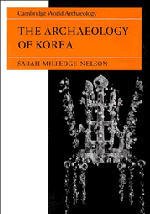Description
The archaeology of korea
Cambridge World Archaeology Series
Language: English
Publication date: 05-1993
323 p. · 17.9x25.3 cm · Hardback
Out of Print
323 p. · 17.9x25.3 cm · Hardback
Out of Print
Description
/li>Contents
/li>
The Archaeology of Korea surveys Korean prehistory from the earliest Palaeolithic settlers, of perhaps half a million years ago, through the formation of the Three Kingdoms, and on to the creation of United Silla in AD 668, when the peninsula was largely united for the first time. The author examines the development of state-level societies and their relationship to polities in Japan and China, and the emergence of a Korean ethnic identity. Emphasising the particular features of the region, she dispels the notion that the culture and traditions of Korea are only pale imitations of those of its neighbours, China and Japan. Sarah Nelson has specialised in Korean archaeology for twenty years. She draws on her own research and that of Korean colleagues
List of illustrations, List of tables, Preface and acknowledgements, 1. Introduction, 2. Environment, 3. Forest foragers, 4. Early villages, 5. Megaliths, rice and bronze 2000 to 500 BC, 6. Iron, trade and exploitation 400 BC to AD 300, 7. Three Kingdoms AD 300668, 8. Ethnicity in retrospect, Bibliography, Index.
© 2024 LAVOISIER S.A.S.
These books may interest you

GyeongjuThe Capital of Golden Silla 223.58 €



